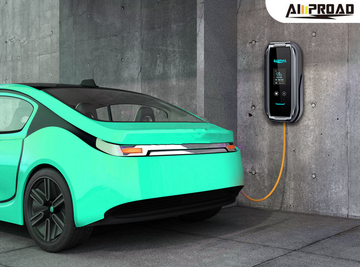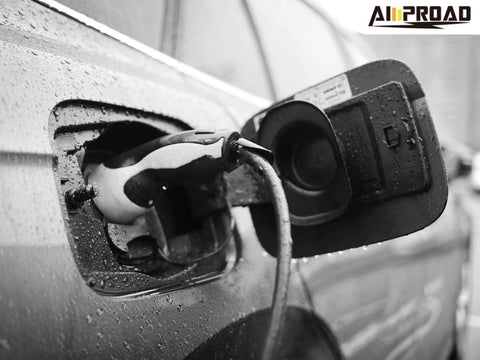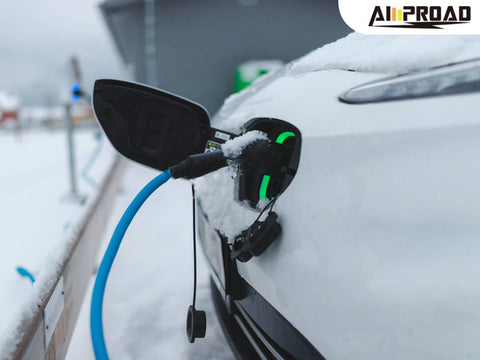
The electric vehicle sector is experiencing significant change, notably with Tesla's Supercharger Network. Formerly reserved for Tesla vehicles, this high-capacity charging system is now moving towards wider accessibility, altering the landscape of EV charging. A pilot program, launched in select European nations during 2021, permitted non-Tesla EVs to utilize the Supercharger Network, signaling a shift towards a more integrated and available charging infrastructure.
Elon Musk, the visionary CEO of Tesla, subsequently announced ambitious plans to extend access to 7,500 Tesla Superchargers and Destination Chargers for specific non-Tesla EV models by the end of 2024. This strategic decision not only aligns with the growing demand for EV charging infrastructure but also positions Tesla to tap into federal funds allocated for the expansion of this critical network. This article explores the evolution of Tesla's Supercharger Network, the implications of this shift, and how non-Tesla EV owners can now benefit from this game-changing development, addressing questions like "how long does it take to charge an electric car" in the context of this transformative move.
If Other Cars Can Use Tesla Chargers
Tesla is gradually expanding access to its Supercharger network for non-Tesla EVs, but availability varies by region. Many locations still require an adapter, and non-Tesla drivers must use the Tesla app to initiate charging. It's also important to distinguish between Superchargers, which provide fast charging, and Destination Chargers, which are more like Level 2 chargers. As Tesla continues to open its network, checking specific EVCS compatibility and required adapters remains essential. While the transition is underway, not all Superchargers are accessible to non-Tesla vehicles yet, making careful planning crucial for EV owners.
The Exclusive Era: Tesla Supercharger Network for Tesla Owners

For years, Tesla Superchargers stood as a symbol of exclusivity, providing Tesla owners with a distinct advantage in terms of access to fast and convenient charging stations. This exclusivity, while advantageous for Tesla drivers, raised questions about the broader accessibility of charging infrastructure for the entire EV community. The limited pilot project in select European countries was the first glimpse into Tesla's willingness to open up its Supercharger Network beyond its proprietary ecosystem.
The Game-Changer: "Magic Dock" Adapters
The turning point in the exclusivity of Tesla Superchargers came in 2023 with the introduction of "Magic Dock" adapters. These adapters, strategically placed at select Superchargers across the country, enabled certain Superchargers to seamlessly accommodate any EV equipped with a Combined Charging System (CCS) plug. CCS is a standard feature in many modern EVs, and this adaptability meant that non-Tesla owners could now access Tesla's powerful charging network.
Charging through the CCS plug allows EVs to tap into Superchargers, which can produce up to 250 kW of charging output, promising up to 20
0 miles of range in just 15 minutes. This development is a game-changer for owners of EVs from manufacturers like Volvo, Mercedes, Ford, and BMW, as it significantly enhances the feasibility and convenience of long-distance travel.
The Role of Adapters: Facilitating Inclusivity
While the move towards inclusivity is commendable, for non-Tesla owners to fully capitalize on this approach, Tesla-to-J1772 adapters become indispensable. These adapters, such as the Amproad nema 14 50r adapter cord, bridge the compatibility gap between non-Tesla EVs and Tesla charging infrastructure. They facilitate connectivity with Tesla Wall Connectors, Mobile Connectors, and Destination Chargers, opening access to over 15,000 charging stations and significantly enhancing the convenience of fast charging for non-Tesla EV owners.

Choosing the Right Adapter: Key Considerations
Selecting the appropriate adapter is crucial for non-Tesla EV owners seeking to leverage Tesla's charging infrastructure. Several factors come into play in making this decision:
Connector Compatibility: Ensure that the adapter selected is compatible with the charging port of the non-Tesla electric vehicle. Most modern EVs utilize the J1772 connector, making a Tesla-to-J1772 adapter a widely suitable choice.
Charging Speed: Consider the desired charging speed. Adapters with higher amperage and voltage ratings support faster charging, providing flexibility for users with varying charging needs.
Build Quality: Opt for adapters from reputable manufacturers known for their quality and durability. A well-made adapter ensures a safe and reliable charging experience.
User Reviews: Read reviews from other non-Tesla EV owners who have used the adapter with their vehicles. Real-world experiences can offer valuable insights into an adapter's performance and compatibility.
Price: Consider your budget when choosing an adapter. While quality is essential, various adapter options are available at different price points to suit diverse needs.
Charging Station Compatibility: Ensure that the chosen adapter is compatible with the Tesla charging stations you plan to use, such as Tesla Wall Connectors, Mobile Connectors, Destination Chargers, as well as other level 2 portable ev charger that's with different connector.
The Historical Context: Why Were Tesla Superchargers Exclusive?
The exclusivity of Tesla Superchargers for Tesla vehicles was not arbitrary; it was rooted in several factors:
Proprietary Technology: Tesla's Supercharger network utilized proprietary technology and connectors distinct from the industry-standard connectors used by most other EV manufacturers. Tesla's decision to employ a unique charging connector design for its vehicles meant that non-Tesla EVs couldn't physically plug into Tesla Superchargers without an adapter.
Business Strategy: Tesla strategically invested in building out its Supercharger network as a competitive advantage for its own EVs. Allowing non-Tesla EVs to use Superchargers might have led to congestion and longer wait times for Tesla owners, potentially discouraging customers from choosing the Tesla brand.
Charging Speed Optimization: Tesla Superchargers were designed to deliver high charging speeds specifically tailored to Tesla vehicles. Allowing non-Tesla EVs to use Superchargers could potentially slow down charging for Tesla owners, as the infrastructure might not handle the increased demand without significant upgrades.
Profit Model: In certain regions, Tesla implemented a fee for using Superchargers. Allowing non-Tesla EVs, whether using a level 2 EV charger or home EV charger, to access the Supercharger network could dilute this revenue stream, making it less financially attractive for Tesla.
Safety and Compatibility Concerns: There are legitimate safety and compatibility concerns associated with allowing non-Tesla vehicles to use Tesla Superchargers. Ensuring that non-Tesla EVs are electrically compatible and safe to charge on Tesla's network would require extensive testing and certification processes.
A More Inclusive Charging Landscape
The evolution of Tesla's Supercharger Network reflects a broader shift towards inclusivity in the EV charging landscape. What was once an exclusive advantage for Tesla owners is transforming into a more interconnected and accessible charging infrastructure for the entire electric vehicle community. Elon Musk's visionary plans and the introduction of adapters demonstrate Tesla's commitment to fostering collaboration and advancing the electrification of transportation beyond brand boundaries.
As non-Tesla EV owners now have the opportunity to access Tesla's Supercharger Network, the future of EV charging is becoming more collaborative and user-friendly. The role of adapters, like the Amproad nema 14 50 Adapter, is pivotal in enabling this inclusivity. The charging landscape is evolving, and Tesla is at the forefront of creating a more accessible and interconnected charging infrastructure for all electric vehicle owners. The exclusive allure of Tesla's Supercharger Network is no longer reserved for a select few; it is becoming a resource for the broader EV community, marking a significant step towards a sustainable and inclusive electric future.

How to Charge A Tesla?
Charging a Tesla is a seamless process, offering multiple options for users. To know more about how to charge a Tesla, read on. At home, utilize a Level 2 EV charger like the Tesla Wall Connector for faster charging. Alternatively, a standard 110-volt wall outlet with the Mobile Connector is an option, albeit slower. On the road, Tesla's extensive Supercharger network ensures high-speed charging. Locate a Supercharger station through your car's navigation system, plug in, and receive a rapid charge. Destination Chargers, available at various establishments, offer a convenient, albeit slower, charging option. Public Level 2 charger is also accessible with the use of adapters. With the flexibility to charge at home or on the go, Tesla makes electric vehicle charging convenient and efficient for its users.
Which EV models can benefit from the inclusivity of Tesla's Supercharger Network?
The inclusivity of Tesla's Supercharger Network has transformed the charging landscape, benefiting EV owners from manufacturers like Volvo, Mercedes, Ford, and BMW. The introduction of "Magic Dock" adapters marks a significant development, allowing these EVs, equipped with CCS plugs, to seamlessly access Tesla's powerful charging infrastructure. This inclusiveness ensures a broader range of electric vehicle users can enjoy the efficiency and speed of Tesla's Superchargers, enhancing the convenience of long-distance travel for a diverse array of EV models. The once-exclusive realm of Tesla Superchargers is now open to a more extensive community of electric vehicle enthusiasts, fostering collaboration and cooperation in the ever-expanding world of sustainable transportation.
How do I choose the right adapter for my EV?
Choosing the right adapter for your electric vehicle involves careful consideration of various factors. Connector compatibility, charging speed, build quality, user reviews, and price are all essential aspects to evaluate. Additionally, ensuring compatibility with both your specific EV model and the Tesla charging infrastructure is crucial for a seamless charging experience. Reading user reviews provides valuable insights into real-world performance and satisfaction. Price considerations should align with your budget, and the adapter must be compatible with the Tesla charging stations you plan to use, including Tesla Wall Connectors, Mobile Connectors, and Destination Chargers. By taking these factors into account, you can confidently select an adapter that meets your specific requirements and enhances the accessibility of EV charging options, including the availability of EV charger near you.


